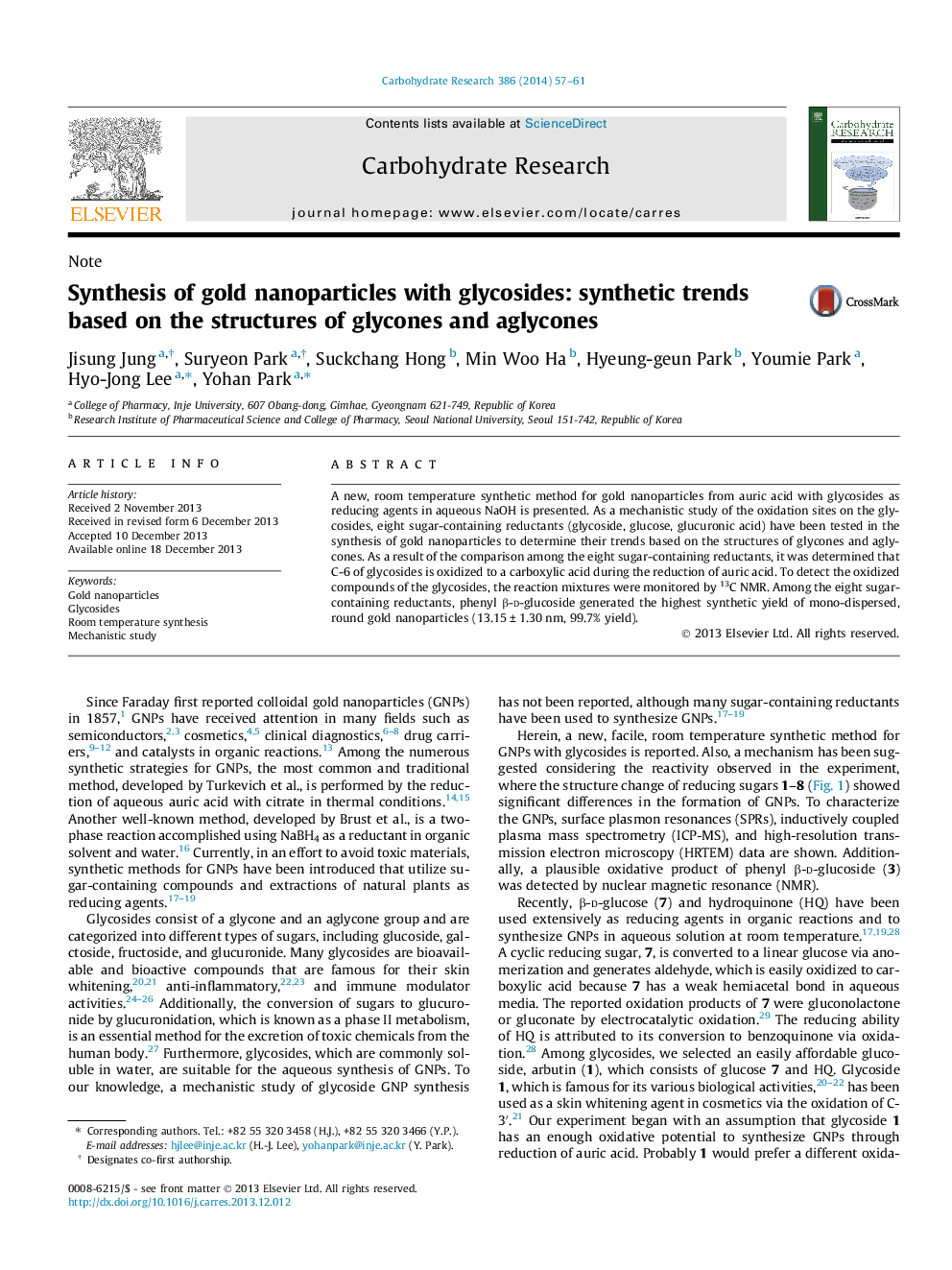| کد مقاله | کد نشریه | سال انتشار | مقاله انگلیسی | نسخه تمام متن |
|---|---|---|---|---|
| 1390225 | 1500865 | 2014 | 5 صفحه PDF | دانلود رایگان |
• A method for gold nanoparticles with glycosides as reducing agents was developed.
• To determine the mechanism, eight sugar-containing reductants were evaluated.
• The mechanism relies on oxidation of the C-6-hydroxy group of glycosides.
• The C-6-hydroxy group was oxidized to a carboxylic acid, detected by 13C NMR.
• Mono-dispersed gold nanoparticles (13.15 ± 1.30 nm, 99.7% yield) were generated.
A new, room temperature synthetic method for gold nanoparticles from auric acid with glycosides as reducing agents in aqueous NaOH is presented. As a mechanistic study of the oxidation sites on the glycosides, eight sugar-containing reductants (glycoside, glucose, glucuronic acid) have been tested in the synthesis of gold nanoparticles to determine their trends based on the structures of glycones and aglycones. As a result of the comparison among the eight sugar-containing reductants, it was determined that C-6 of glycosides is oxidized to a carboxylic acid during the reduction of auric acid. To detect the oxidized compounds of the glycosides, the reaction mixtures were monitored by 13C NMR. Among the eight sugar-containing reductants, phenyl β-d-glucoside generated the highest synthetic yield of mono-dispersed, round gold nanoparticles (13.15 ± 1.30 nm, 99.7% yield).
Figure optionsDownload as PowerPoint slide
Journal: Carbohydrate Research - Volume 386, 11 March 2014, Pages 57–61
